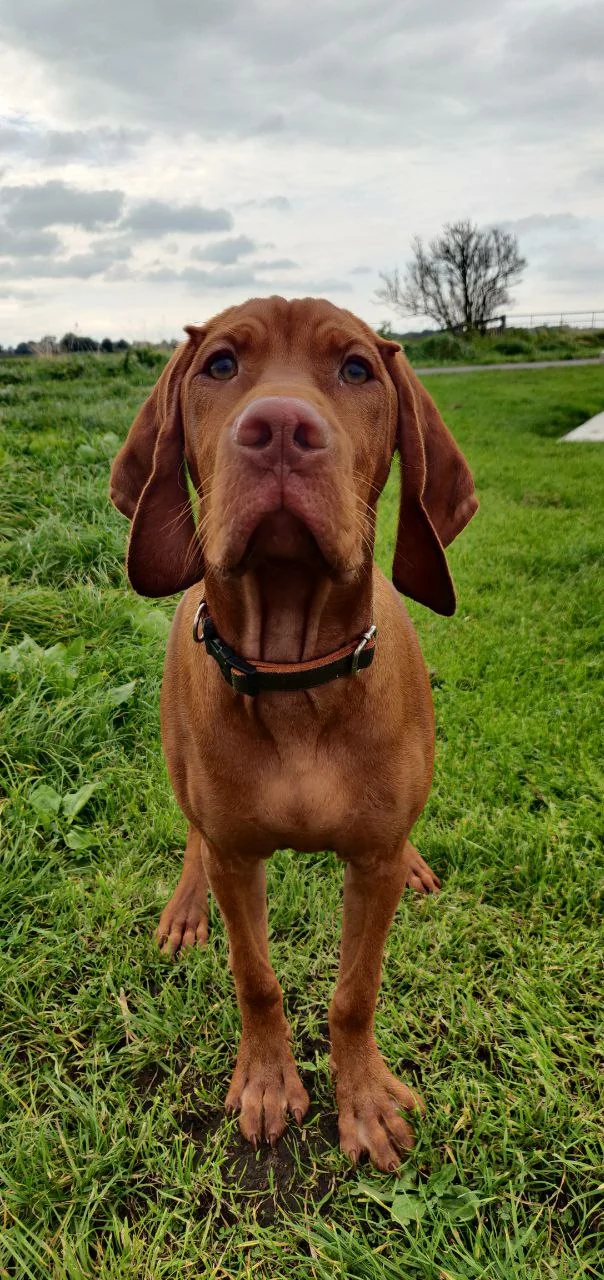Table of Contents
Introduction
The Horn Dog Breed is a beautiful breed of canine with a horn growth on its head, and so it is prestigious among all breeds of canines. It important to understand that Such dogs have special needs each needs to be endowed specialized attention, training and care.
Though rare to come by, Horn Dog Breed puppies are bright, friendly and playful creatures. But when well nurtured, they end up being loyal and affectionate animals. That is why this guide will navigate through such headlines as Physical characteristics, Training requirement, Grooming, and much more, to ensure that your pet would receive the best treatment.
Physical Characteristics and Health
Overview of the Breed’s Unique Features
Horn Dog Breed puppies are easily recognized by their unusual horn-like structure, which can vary significantly in:
- Size: Some puppies may have minor, subtle protrusions, while others exhibit larger, more prominent ones.
- Shape: The horn may appear rounded, tapered, or irregular, depending on the individual puppy.
- Texture: Smooth or slightly rough textures are typical of the horn area.
Their coat is typically medium-length, soft, and available in a variety of colors, including black, tan, and brindle.
Common Health Concerns
Horn Dog Breed puppies are generally healthy but may experience specific issues related to their unique physical traits:
- Horn Care: The horn area is prone to injuries or infections if not properly maintained.
- Skin Sensitivity: The skin surrounding the horn is delicate and requires regular cleaning.
- Joint Problems: Due to their active nature, they may develop joint issues if over-exercised as puppies.
Preventative Health Measures
- Routine Veterinary Visits: Regular check-ups help catch potential health issues early.
- Balanced Nutrition: A high-quality diet rich in essential nutrients supports skin health and overall vitality.
- Proper Hygiene: Regularly clean and monitor the horn area to avoid infections.
Training and Socialization
Importance of Early Training
Horn Dog Breed puppies are attentive and quick to learn so that they will react well to training. However, they are independent and often probe into issues thus making difficulties. It is implies that they are well recommended after the early socialization and become well matured adults.
Effective Training Techniques
- Positive Reinforcement: One should learn that positive reinforcements including giving treats and praising develops trust amongst them.
- Short Training Sessions: Keep sessions engaging and focused to maintain their attention.
- Crate Training: This can provide a safe space and aid in housebreaking.
Socialization Tips
- Interaction: Expose them to people, children, and other animals from a young age.
- New Environments: Gradually introduce them to different settings to prevent anxiety.
- Leash Training: Start early to ensure they remain calm during walks.
Exercise and Playtime
Daily Activity Requirements
Horn Dog Breed puppies are energetic and require consistent exercise to stay healthy and happy.
- Daily Walks: A 30–60 minute walk keeps them physically fit.
- Interactive Play: Toys like fetch balls, tug ropes, and puzzle feeders engage their minds.
- Safe Outdoor Play: Ensure playtime occurs in a securely fenced yard to prevent accidents.
Managing Energy Levels
- Structured Play: Break activities into multiple sessions throughout the day.
- Supervised Play: Monitor activities to avoid injuries, especially to their horn.
- Mental Stimulation: Use toys and training games to challenge their intelligence.
Grooming and Hygiene
Horn Care
The horn is the breed’s most distinctive feature and requires special attention:
- Cleaning: They recommend that one having the horn should clean the horn with a damp cloth once a week, focusing on the region around the horn.
- Infection Prevention: Watch for signs like redness, swelling, or discharge and consult a vet if issues arise.
Coat and General Grooming
- Brushing: Brush their coat twice a week to prevent tangles and maintain shine.
- Bathing: Bathe monthly or as needed using mild, hypoallergenic dog shampoo.
- Nail Trimming: Clip nails every 3–4 weeks to prevent overgrowth and discomfort.
- Ear Cleaning: Check for wax buildup and clean with vet-approved solutions.
Common Challenges and Solutions
Health-Related Issues
- Skin Irritation: Use gentle, vet-recommended products to soothe and protect sensitive skin.
- Horn Injuries: Avoid rough play and sharp objects that could damage the horn.
Behavioural Challenges
- Stubbornness: Maintain consistency in training to address willful behaviour.
- Social Anxiety: Gradual exposure to new experiences helps reduce nervousness.
Tips for Overcoming Challenges
- Professional Support: Seek guidance from trainers or vets when challenges persist.
- Patience: Address issues calmly and consistently over time.
Creating a Suitable Environment
Safe and Comfortable Living Space
Horn Dog Breed puppies thrive in a secure and loving environment:
- Fenced Yard: Prevent escapes and ensure safety during outdoor play.
- Comfortable Indoors: Provide a quiet space with a cosy bed for rest.
Environmental Enrichment
- Toys: Use chew toys and interactive games to keep them entertained.
- Family Interaction: Horn Dog Breed puppies are social and love being part of family activities.
Conclusion and Final Tips
Horn Dog Breed puppies are genuinely one of a kind, requiring a little extra care and attention to reach their full potential. Their distinctive horn and affectionate nature make them both fascinating and loving companions.
Key Takeaways for Owners
- Health Maintenance: Regular veterinary care, horn hygiene, and balanced nutrition are essential.
- Practical Training: Start early, use positive reinforcement, and remain patient.
- Exercise and Play: Provide consistent physical and mental stimulation.
Sarah Smith is a passionate dog and cat enthusiast, blogger, and pet care expert. With years of experience researching and writing about various dog breeds cat breeds, she brings a wealth of knowledge and insight to her blog, PetPession.com. Sarah loves exploring the unique traits, histories, and care needs of different breeds, helping pet owners make informed decisions. Her mission is to create helpful, friendly, and well-researched content that both educates and celebrates the joy of pet ownership. When she’s not writing, Sarah enjoys outdoor adventures with her own furry friends.

